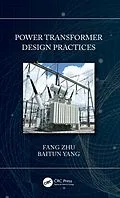The book presents basic theories of transformer operation, design principles and methods used in power transformer designing work, and includes limitation criteria, effective utilization of material, and calculation examples to enhance readers' techniques of transformer design and testing.
It includes:
- Core and winding commonly used, and their performances
- Insulation structures and materials, methods for improvements on dielectric strengths on partial discharge, breakdown and electrical creepage
- Losses and impedance calculations, major influential factors, and methods to minimize load loss
- Cooling design and the method to obtain effective cooling
- Short-circuit forces calculations, the ways to reduce the short-circuit forces, and measures to raise withstand abilities
- No-load and load-sound levels, the influential factors and trends, and abatement techniques
- In-depth discussion of an autotransformer's special features, its stabilizing winding function, and its adequate size
- Tests and diagnostics
The ways to optimize design are also discussed throughout the book as a goal to achieve best performances on economic design.
The book contains great reference material for engineers, students, teachers, researchers and anyone in the field associated with power transformer design, manufacture, testing, application and service maintenance. It also provides a high level of detail to help future research and development maintain electrical power as a reliable and economical energy resource.
Autorentext
Fang Zhu is currently Engineering Manager at R. E. Uptegraff, USA.
Baitun Yang currently Senior Engineer at R. E. Uptegraff, USA.
Inhalt
1. Introduction 1.1 Basic theory 1.2 Practical constrains on the design 1.3 Active part material costs References
2. Core 2.1 Core materials 2.2 Core types 2.3 No-load loss 2.4 Exciting characteristics 2.5 Inrush current 2.6 Test failures of no-load loss 2.7 Core insulation and ground 2.8 Flux density generated by quasi-DC current 2.9 Gapped core References
3. Windings 3.1 Types of winding 3.2 Transpositions 3.3 Half -turn effect 3.4 Axial split windings 3.5 Cables used in winding References
4. Insulation 4.1 Voltages on transformer terminals 4.2 Voltage inside transformer 4.3 Insulation materials 4.4 Partial discharge and insulation structure 4.5 Major insulation design 4.6 Minor insulation design 4.7 Lead insulation 4.8 Typical electric field patterns References
5. Impedances 5.1 Positive sequence / negative sequence impedance 5.2 Zero-sequence Impedance References
6. Load loss 6.1 I2R loss 6.2 Winding eddy current loss 6.3 Circulating current loss 6.4 Circulating current loss in winding leads 6.5 Losses in metallic structure parts 6.6 Shunts References
7. Cooling 7.1 Basic knowledge 7.2 Temperature rises of oil 7.3 Loading capacity 7.4 Cooling of winding References
8. Short circuit obligation 8.1 Short-circuit events 8.2 Radial and axial electromagnetic forces 8.3 Failure modes 8.4 Short-circuit forces in special transformers 8.5 Short-circuit current calculation 8.6 Impedance effects on short-circuit force 8.7 Short-circuit forces on leads 8.8 Thermal capability of withstanding short circuits 8.9 Measures for robust mechanical structure. 8.10 Compressive stress on radial spacer 8.11 Axial bending stress on conductor 8.12 Tilting force 8.13 Hoop stress References
9. Sound levels 9.1 No load sound 9.2 Load sound 9.3 Fans and pump sound 9.4 Total sound 9.5 Sound level measurements References
10. Autotransformer 10.1 Basic relations 10.2 Insulation consideration 10.3 Tap winding electrical locations 10.4 Winding physical disposition 10.5 Use of auxiliary transformers 10.6 Zero sequence impedance and delta connected winding References
11. Testing 11.1 Preliminary tests 11.2 No-load losses and excitation current 11.3 Lightning impulse and switching impulse 11.4 Applied voltage 11.5 Induced voltage test and partial discharge measurement 11.6 Load losses and impedance voltage 11.7 Temperature rise 11.8 Audible sound level 11.9 Others References
